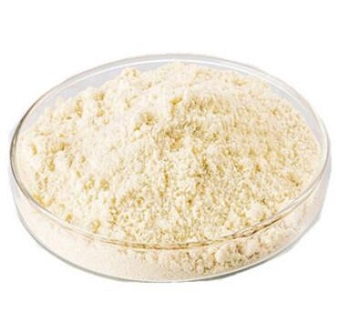Background and overview[1][2]
Molecular formula C7H5BrO2. Molecular weight 201.03. Needle crystals. Melting point 155℃. Soluble in ethanol, ether, slightly soluble in water. Melts with potassium hydroxide to generate m-hydroxybenzoic acid. Preparation method: obtained by direct bromination of benzoic acid. Uses: Used as reagents for organic synthesis.
Metabromobenzoic acid is a very important type of chemical intermediates. They are widely used in analysis and detection (chemical reagents), organic synthesis and pharmaceutical intermediates (anti-rheumatic drug ketoprofen, etc.), and curing in the plastics industry. Accelerators and fire retardant additives and binders for photographic materials.

Preparation[1]
The environmentally friendly preparation method of m-bromobenzoic acid specifically includes the following preparation steps:
(1) The reaction device is a 2000ml four-neck round-bottomed flask with a condenser tube, a thermometer and two dropping funnels; add sodium benzoate (1mol) and 300ml of phosphate buffer solution to the reaction device and perform ultrasonic dissolution ;
(2) Then add sodium bromide (1mol) and perform ultrasonic “stirring” to mix evenly. Ultrasonic “stirring” will avoid the disadvantage of product precipitation causing entrapment that is not conducive to the reaction;
(3) Raise the temperature of the solution in the reaction device to 40°C and maintain it. Drip 6% sodium chlorite solution (1.03mol) under ultrasound. The sodium chlorite oxidizes bromide ions to instantly generate highly active, atomic bromine. And immediately react with sodium benzoate. In addition, add a small amount of 5% dilute hydrochloric acid in time to keep the pH value in the buffer system at 5;
(4) After the feeding is completed, keep it warm for 1 hour, then raise the temperature to 60°C and keep it warm for 1 hour;
(5) Add dilute hydrochloric acid to the buffer system to adjust the pH value to 3, cool to -5°C, let stand and filter, and obtain the crude product with a conversion rate of 93.5% (calculated as benzoic acid);
p>
(6) The crude product was recrystallized, filtered and dried to obtain m-bromobenzoic acid, with a content of 98.5% and a yield of 84% (calculated as sodium benzoate). No m-chlorobenzoic acid was detected;
(7) Add hydrochloric acid to the filtrate to acidify it to a pH value of 1, cool it, and recover unreacted benzoic acid with a recovery rate of 0.04 mol.
Application[3]
Ketoprofen (KP) is also known as Ketoprofen, Ketoprofen, Uprofen, Uprofen or Profenid, and its chemical name is α-methyl-3-benzoylphenylacetic acid. [2-(3-Benzoylphenyl) propanoic acid [CAS: 22071-15-4]] is an excellent 2-arylpropionic acid nonsteroidal drug developed by chemists Farge, Messer and Moutounier of the French Rhone-Poulenc Company in 1967. Anti-inflammatory and analgesic drugs. A preparation method of ketoprofen includes the following steps:
Step 1, synthesis of 3-bromobenzophenone (1):
Using m-bromobenzoic acid and benzene as raw materials, synthesize (1) through acyl chlorination and Fuckers acylation reaction. The catalyst used is aluminum trichloride, and the solvent is methylene chloride, ethyl acetate, petroleum ether, and diethyl ether. , chloroform, carbon disulfide or nitrobenzene:
Step 2, synthesis of 2-(3-bromophenyl)-2-phenyl-1,3-dioxopentane (2):
The above (1) and ethylene glycol are synthesized (2) through acid catalysis in a non-polar solvent. The catalyst used is p-toluenesulfonic acid, and toluene is selected as the solvent:
Step 3, synthesis of 2-(3-(2-propanol)phenyl)-2-phenyl-1,3-dioxopentane (3):
The above (2) is reacted with Mg in anhydrous tetrahydrofuran to prepare Grignard reagent, and then propylene oxide is added dropwise at low temperature to synthesize intermediate 3:
Step 4, synthesis of ketoprofen (4):
Under alkaline conditions, the above (3) is oxidized by the tempo/NaClO/NaBr system, and finally deprotected under acidic conditions to obtain ketoprofen (4)
Main reference materials
[1]Compound Dictionary
[2]CN201510452982.2 An environmentally friendly preparation method of m-bromobenzoic acid
[3][Chinese invention] CN201611114385.X Preparation method of ketoprofen

 微信扫一扫打赏
微信扫一扫打赏

